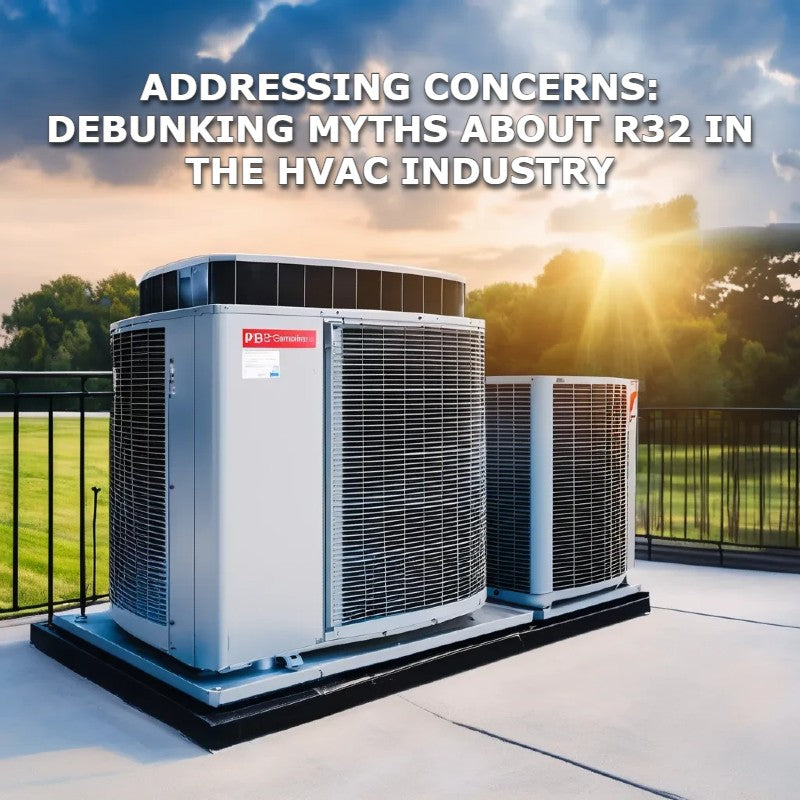As the HVAC industry transitions towards more environmentally friendly refrigerants like R32, there may be misconceptions and concerns surrounding the adoption of this innovative technology. It's essential to address these myths and debunk misinformation to ensure stakeholders have accurate information about the properties, performance, and safety of R32 refrigerant. In this blog post, we'll tackle common myths about R32 in the HVAC industry and provide factual information to address these concerns.
Myth #1: R32 is Extremely Flammable and Unsafe:
One of the most common myths about R32 is that it is highly flammable and poses a significant safety risk. While it's true that R32 is mildly flammable, it is classified as A2L (mildly flammable) under ASHRAE standards, indicating a lower flammability risk compared to other flammable substances. HVAC systems using R32 are designed with safety features and protocols to mitigate the risk of ignition and ensure safe operation.
Myth #2: R32 is Harmful to the Environment:
Another myth about R32 is that it is harmful to the environment and contributes to climate change. In reality, R32 has a lower global warming potential (GWP) compared to traditional refrigerants like R410A, making it a more environmentally friendly option. By reducing greenhouse gas emissions and ozone depletion potential (ODP), R32 helps mitigate the environmental impact of HVAC systems and supports sustainability initiatives.

Discover Top-Grade Air Conditioners: View Our Products Today
Some may believe that transitioning to R32 requires costly equipment upgrades or modifications to existing HVAC systems. However, many HVAC manufacturers offer R32-compatible equipment and components that are designed to work seamlessly with existing infrastructure. Retrofitting existing systems with R32 refrigerant is often a straightforward process that can be performed by qualified HVAC professionals without significant disruption or expense.
Myth #4: R32 is Less Efficient Than Other Refrigerants:
There is a misconception that R32 is less efficient than other refrigerants and may result in higher energy consumption and operating costs. In reality, R32 has superior thermodynamic properties that enable HVAC systems to operate more efficiently and effectively. With higher volumetric cooling capacity and lower energy consumption, R32-based systems offer improved performance and energy efficiency compared to traditional refrigerants.
Myth #5: R32 is Not Widely Available or Supported:
Some may believe that R32 is a niche refrigerant with limited availability and support from manufacturers and contractors. However, R32 has gained widespread acceptance and adoption in the HVAC industry, with many manufacturers offering R32-compatible equipment and components. Additionally, HVAC professionals are trained and certified to handle R32 safely and effectively, ensuring widespread support for R32-based systems.
In conclusion, debunking myths about R32 in the HVAC industry is essential for promoting accurate information and fostering confidence in the adoption of this environmentally friendly refrigerant. By addressing concerns about flammability, environmental impact, compatibility, efficiency, and availability, stakeholders can make informed decisions about transitioning to R32-based systems. With its proven performance, safety features, and environmental benefits, R32 is poised to play a significant role in the future of HVAC technology. If you’re looking for an R32 product coming soon we suggest the Goodman 3 Ton 16.4 SEER2 R32 Air Conditioner Condenser.







